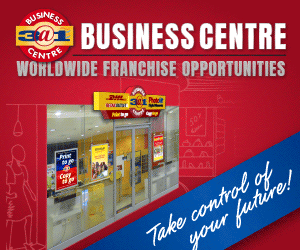In the face of changing consumer behaviour and spending-conscious customers who may feel entitled to discounts or added value, getting the details of online retailing right is vital.
What can smaller online retailers do to keep the money coming in, while adapting to how their customers’ behaviour is changing? Read on for five fundamental ecommerce tips:
Keep up with the zeitgeist
Whether it is a new TikTok dance fad or the much wider move towards more sustainable and “woke” products and services, be sure that you understand the broad trends across your market. This means paying special attention to how your products are photographed and presented online, and using a diverse team to check text and content, among other things, to ensure that you meet your customers’ demand for ethical retailing.
Diversity, compliance with labour laws, and excellent staff management all play into how consumers view your brand. They also influence consumers’ shopping choices, and determine their continued loyalty. It almost goes without saying, then, that online retailers have to ensure the products they sell meet all ethical manufacturing and production guidelines, and that their suppliers also comply with conscience-driven customer sensitivities.
Understand your customer’s journey
This point seems hackneyed by now, but it remains absolutely crucial for online businesses. Businesses’ understanding (or lack thereof) of their customer’s journey to finally purchasing an item remains a key differentiator between successful and less successful online retailers. Interrogate and understand what drives people to your site, what takes them beyond clicking on a product to wishlisting it, and what finally motivates them to place the order and make the payment (and all the steps in between, however tiny they seem at first glance). Use the data that is already being captured by your internal systems to identify where you’re losing customers’ interest, and work on ways around those hurdles – or remove the hurdles completely.
“Every element of a customer journey should be designed around three primary ingredients of customer experience: effectiveness, ease, and emotion. This will require a personalised knowledge of each customer and an understanding of how a typical customer interacts with the business. Throughout their journey, customers interact with a variety of channels and touchpoints, whether it be customer portals, a website or an app. Retailers should plan how all channels, traditional or digital, can work together with ease and effectiveness to deliver a strong feeling of satisfaction – ultimately resulting in a connected emotional customer experience,” advises Greg Gatherer, account manager at Liferay Africa.
Sort out your payment gateways
Online retailing is about removing as many potential hurdles as possible to the final buying action. One key component in this regard is easily accessible payment gateways. Consumers prefer a brand they’re familiar with, and want to know they’re getting optimal protection for their card details and their privacy. As such, a range of reputable payment gateway options is more than helpful.
Pay attention to your delivery mechanisms
Few things undermine repeat business as effectively as a bad delivery experience. Double check that your delivery systems and staff are up to scratch, and make it almost impossible for human error to be the cause of unhappy customers. Do your drivers check the delivery instructions pointing out that a particular bell is out of order, and phone rather than hoot from the curbside? Are your collection points clean, with sufficient health measures in place to make people feel confident they will be safe when collecting their items? Is there clear and easily understood signage pointing customers to where they should go and how they can access special services? The answers to these questions can make a huge difference as to whether you’ll see a customer again.
Choose your loss-leaders, discounts and special offers with your customers in mind
Loss-leaders (basic items made available at a much reduced price, intended to encourage customers to spend more while in-store) are an age-old retailing concept that seems to have fallen out of favour in the rush to get online. Yet, these can prove particularly useful as a way to encourage online shoppers back to your site, or to help them to find ways to spend more when they’re already shopping. Online customers know they are already spending money on a delivery fee, and can be enticed to add one or two more items to their trolley to qualify for free shipping or other promotions. Similarly, they may be keen to build a particular collection by tapping into your discount codes for the particular collection. Maybe they would prefer to earn cash backs or loyalty points? This is where the previous four points come together to deliver the “wow factor” that makes customers return. (Post-purchase strategies.)
As with so many things in online retailing, the broad concepts remain standard good business practices that apply whether you are an online or bricks-and-mortar retailer. More than ever before the devil is in the details, whether she’s wearing Prada or buying socks online.
Jessica Boonstra, CEO and Founder of e-tailer Yebo Fresh, adds the following parting advice:
Adapt your shopping journey to your customer’s needs:
For example, despite the massive adoption of smartphones and rapid online transformation, many customers (in townships particularly) do not have access to vast amounts of data. Yebo Fresh has resolved that problem by allowing order taking via whatsapp, SMS, call-me-back and facebook light, in addition to the ‘traditional’ website shopping.
Also, because many YF customers prefer to see and touch the product to confirm its quality before payment, Yebo Fresh allows payment upon delivery which boosts the trust in the brand and the experience.
Find synergies with partners
In order to become successful online, you do not have to be an expert in every aspect of the journey, from marketing, to product master data management, warehousing to delivery and payment. Choose the elements of the business model that define your USP and make sure you ‘own’ them, while relying on outsourced or partner capabilities for the rest. Choosing your partners strategically will make all the difference in terms of offering, operational execution and cost levels.











